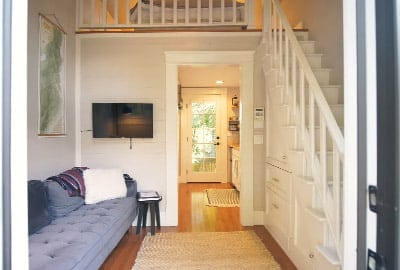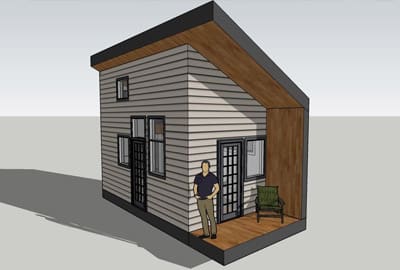





A link to download your FREE brochure will be in your inbox in 3 minutes



















The final price may vary based on project specifics.
To get a free accurate quote tailored to your needs, book a consultation with us today!

The price per square foot provided is an average and may vary depending on project-specific details such as materials, location, complexity, and other factors. Actual costs may differ from the average provided.
It is recommended to obtain a detailed quote based on the specific requirements of your project.

Please note that the monthly payment displayed on this page is an estimate and is subject to variation based on the selected loan product, applicants credit score, loan amount, and other financial details. Actual monthly payment may differ from the estimate provided.
It is recommended to seek advice from a financial advisor or loan officer to obtain precise payment information tailored to individual circumstances.
 Your Trusted
Local Contractor
Your Trusted
Local Contractor

The tiny house movement has gained traction worldwide, celebrating minimalism and affordability. Yet, just as with standard houses, tiny homes, whether on or off wheels, aren't without regulations.
The zoning laws, local regulations, and building codes that most tiny houses must adhere to are there for a reason, especially when it comes to size restrictions.
Most states have strict regulations regarding the dimensions of tiny homes, particularly their width and height. But why are these restrictions in place?
The vast majority of tiny house owners prefer mobile tiny homes, often dubbed as tiny houses on wheels. This mobility comes with stipulations. Towing capacity, truck bed compatibility, and maximum weight play crucial roles in determining the tiny house dimensions.
When designing tiny houses on wheels, there's always the challenge of balancing size and mobility. A tiny house built to maximize internal dimensions might find itself being too wide or too tall to be legally transported without special permits.
The federal government standard width for motor vehicles on major roadways is 8.5 feet. Many tiny house trailers, at their maximum width, are built to this specification.
For the sake of safety and to avoid issues with bridges and overpasses, most tiny homes have a height limit.
Failure to comply with the width and height limitations of a tiny house on wheels can lead to various consequences of the imposition of a fine to evacuation by tow vehicle, so always study the regulations on the dimensions of your mobile home.
There are numerous regulations that influence the size of a tiny house. The international residential code, for instance, outlines requirements for small house structures like granny flats. Building regulations often stipulate minimum and maximum dimensions for liveable spaces, such as tiny homes on wheels.
Local laws and zoning ordinances might restrict the square footage or the placement of tiny homes, especially in urban areas. Moreover, certain zones, like RV parks, have their own rules when it comes to the size trailer you can bring in. On par with this, different regulations apply for each RV park, e.g., the upper limits of trailer length may vary from 19 feet to 47 feet.
The same goes for the range of trailer weight and other factors such as the age of tiny house on wheels or its roof overhang.
Here are a few major reasons:
Buying or building a tiny home is thrilling, but it's essential to double-check and adhere to the following:

In the growing landscape of the tiny house movement, understanding the nuances of building codes, height restrictions, and the gray area of local zoning laws is paramount. While the freedom to live small is tempting, adhering to regulations is crucial for safety, mobility, and long-term peace of mind. As the saying goes, "It's not just about living in a house, but living well." And in the world of tiny homes, living well means living within the rules.
Therefore, if you need more room or if you want to customize your tiny house and the changes will concern the dimensions, then be sure to consult with a lawyer so that the project fully complies with local laws.
While specific zoning laws and local regulations may vary, the vast majority of states adhere to the federal government's standard for motor vehicles, setting a maximum width at 8.5 feet. However, length varies and often needs to be double-checked with local laws and the tiny house communities you plan to join.
The GVWR represents the maximum weight a towing vehicle can safely carry, including the trailer weight, tiny house built on it, and all the internal items. It's crucial to understand this rating as it influences the materials used, the square footage possible, and ensures safe transportation on major roadways.
Yes, most states and tiny houses communities have height restrictions, generally influenced by building regulations and the international residential code. The goal is to prevent issues with major highways, bridges, and underpasses. It's always best to check local laws and make sure your design stays within the upper limits to avoid needing special permits.
Zoning ordinances, local laws, and even RV parks have their own rules regarding the size trailer, square footage, and maximum dimensions of tiny homes they permit. These regulations ensure safety, order, and aesthetics in both urban and tiny house communities. Before setting up, always consult local regulations to avoid any gray areas.
Absolutely! Many tiny homes vary in design to optimize square footage and internal dimensions without breaching size limits or weight limits. Smart designs incorporate foldable structures, multipurpose furniture, and efficient storage solutions to make the most of the available space while still fitting within the towing capacity of a standard truck bed.
Yes, if your mobile tiny home exceeds standard size or weight limits set by local regulations or the federal government, you will need special permits for transportation. It's essential to double-check these limits and obtain any necessary permissions before moving your house to prevent legal complications.